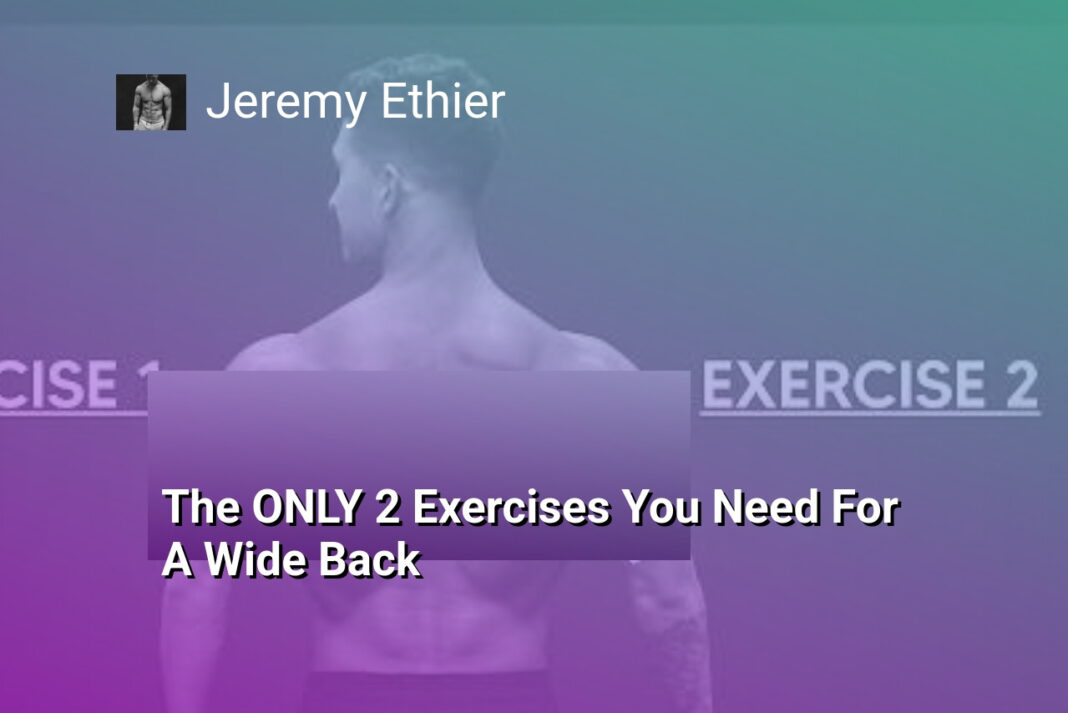The Bottom Line:
- I discovered that developing a V-taper physique requires strategic lat training, focusing on specific techniques often overlooked by most athletes.
- By using narrow grip variations and precise shoulder mechanics, I learned how to effectively target lower and upper lat muscles during pulldowns and rows.
- I now understand the importance of avoiding “arm pulling” and instead emphasizing elbow path and shoulder movement for optimal muscle engagement.
- I found that incorporating advanced techniques like half-rep sets can significantly enhance muscle intensity and push past traditional training limitations.
- Following a structured volume guideline of 3-4 sets with 10-15 reps, complemented by targeted half-rep techniques, can dramatically improve lat development and overall back muscularity.
Understanding the V-Taper Muscle Development Strategy
Biomechanics of Lat Muscle Engagement
The V-taper muscle development strategy fundamentally centers on precise lat muscle recruitment through strategic movement patterns. Traditional back training often neglects critical biomechanical principles that maximize lat width and thickness. By understanding shoulder mechanics and elbow trajectory, athletes can dramatically enhance muscle engagement and growth potential. The key lies in consciously controlling shoulder depression and maintaining a specific elbow path during pulling movements.
Strategic Movement Techniques
Effective lat development requires moving beyond conventional wide-grip pulling techniques. Athletes must focus on shoulder-width grip variations that allow tighter elbow positioning and more direct muscle recruitment. The critical technique involves pulling the elbow toward the hip rather than pulling the bar toward the chest, which shifts muscular emphasis and creates more comprehensive lat activation. Neutral and slightly underhand grips enable more natural movement patterns that enhance muscle fiber recruitment across different lat regions.
Progressive Overload and Intensity Manipulation
Advanced V-taper development incorporates sophisticated intensity techniques beyond standard repetition schemes. Implementing techniques like partial repetitions after full-range movements and utilizing shoulder depression/elevation can extend muscular tension and stimulate additional growth signals. The recommended protocol involves 3-4 sets with 10-15 repetitions, complemented by 3-5 half-repetitions to push muscles beyond traditional failure points. This approach ensures comprehensive muscle fiber stimulation and promotes continuous adaptation in lat muscle development.
Advanced Lower Lat Pulldown and Pull-Up Techniques
Precision Elbow Mechanics for Enhanced Lat Engagement
Developing superior lat activation requires understanding nuanced movement patterns beyond traditional pulling techniques. The key lies in precise elbow trajectory and shoulder positioning. By focusing on pulling the elbow toward the hip rather than yanking the bar to the chest, athletes can dramatically improve muscle recruitment and tension. This approach ensures that the latissimus dorsi muscles, not secondary muscle groups, bear the primary load during pulling movements.
Strategic Scapular Depression and Shoulder Positioning
Optimal lat development demands intentional shoulder mechanics. Athletes should learn to depress the scapula—essentially “shoving” the shoulder downward—before initiating the pulling motion. This technique creates a biomechanical advantage by pre-stretching the lat muscles and establishing a stronger neural connection. During lower lat pulldowns, maintaining a slight 10-15 degree backward lean helps optimize muscle fiber recruitment and reduces compensatory movements that might diminish exercise effectiveness.
Advanced Intensity Progression Techniques
Beyond standard repetition ranges, advanced lat training incorporates sophisticated intensity techniques. After completing full-range repetitions, athletes can implement partial repetitions, specifically 3-5 half-rep sequences that push muscles beyond traditional failure points. For pulldowns, an innovative method involves maintaining straight arms while rhythmically raising and lowering shoulders, extending the set’s metabolic stress and muscular engagement. These techniques not only challenge muscle fibers but also stimulate hypertrophy through increased time under tension and neuromuscular fatigue.
Upper Lat Row Mechanics for Maximum Muscle Engagement
Precision Elbow Trajectory and Muscle Activation
Executing upper lat rows demands meticulous attention to elbow mechanics and precise movement patterns. The key is maintaining a high-to-low pulling angle that maximizes lat engagement while minimizing unnecessary trunk rotation. By focusing on pulling the elbow down and back toward the hip, athletes can create targeted muscle tension that stimulates upper lat development more effectively than traditional rowing techniques.
Strategic Grip and Shoulder Positioning
Optimal lat engagement begins with strategic grip selection and shoulder positioning. A neutral, shoulder-width grip provides the most biomechanically efficient pathway for muscle recruitment. During the movement, athletes must concentrate on depressing the scapula, which means consciously “shoving” the shoulder downward. This technique ensures that the latissimus dorsi muscles, rather than secondary muscle groups, bear the primary load during the exercise.
Advanced Muscle Recruitment Techniques
To enhance muscle activation, athletes should avoid the common mistake of “arm pulling” and instead emphasize the intricate interplay between elbow path and shoulder movement. Starting with a straight arm and a relaxed shoulder, the movement should initiate by driving the shoulder downward while maintaining a controlled, deliberate elbow trajectory. Incorporating techniques like partial repetitions and strategic set extension can further amplify muscle stimulation, pushing the upper lat muscles beyond traditional training limitations and promoting comprehensive muscle growth.
Precision Technique to Optimize Lat Training
Strategic Muscle Engagement Techniques
Developing impressive lats requires precision beyond traditional pulling movements. The key lies in understanding muscle recruitment patterns and optimizing biomechanical positioning. By focusing on specific movement pathways, athletes can activate deeper muscle fibers and create more comprehensive lat development. Critical elements include maintaining proper scapular positioning, controlling elbow trajectory, and minimizing unnecessary trunk movement during exercises.
Biomechanical Pulling Mechanics
Effective lat training demands a nuanced approach to movement execution. When performing pulldowns or rows, athletes must prioritize shoulder depression and precise elbow path over simply moving weight. The goal is to drive the elbow toward the hip while maintaining a stable torso, which maximizes lat engagement and minimizes compensatory movements. Shoulder-width neutral grips provide optimal leverage, allowing more direct muscle recruitment and reducing strain on peripheral muscle groups.
Advanced Muscle Activation Protocols
To enhance lat development, incorporate progressive intensity techniques that push muscular adaptation. After completing standard repetitions, implement partial range movements like half-repetitions to extend muscle tension and stimulate additional growth signals. Techniques such as maintaining arm extension while manipulating shoulder positioning can create prolonged muscular stress, triggering enhanced metabolic responses. By strategically varying grip width, angle of pull, and rep ranges, athletes can systematically target different lat muscle regions, ensuring comprehensive muscular development and preventing adaptation plateaus.
Intensity and Volume Protocols for Lat Muscle Growth
Strategic Muscle Fiber Recruitment Techniques
Developing comprehensive lat muscle growth requires a nuanced approach that targets multiple muscle fiber types through strategic intensity manipulation. The primary objective is creating mechanical tension and metabolic stress across different rep ranges and loading parameters. Athletes should focus on progressively challenging the latissimus dorsi through varied movement patterns that emphasize scapular depression and elbow trajectory.
Progressive Overload and Mechanical Principles
Effective lat development demands precise execution of pulling movements with intentional biomechanical considerations. Implementing a systematic approach involves selecting exercises that maximize muscle recruitment while minimizing compensatory movement patterns. Narrow and neutral grip variations enable more direct lat engagement, allowing trainees to target lower and upper lat regions with enhanced specificity. Techniques such as maintaining a slight backward lean during pulldowns and concentrating on pulling the elbow toward the hip rather than simply pulling the bar create superior muscle activation.
Advanced Intensity Manipulation Protocols
To optimize muscle growth, incorporating intensity techniques becomes crucial. Advanced protocols like partial repetitions and strategic failure training can significantly enhance muscle hypertrophy potential. After completing full range-of-motion repetitions, athletes can extend set duration by performing 3-5 half repetitions, pushing muscle fatigue beyond traditional failure points. Additionally, implementing techniques such as shoulder depression during pulldowns and maintaining strict elbow path control ensures maximum lat engagement.
Volume recommendations suggest performing 3-4 sets per exercise within the 10-15 repetition range, with an emphasis on quality movement execution. By systematically varying grip width, angle of pull, and incorporating intensity techniques, athletes can create a comprehensive stimulus for continuous lat muscle development and enhanced V-taper progression.





